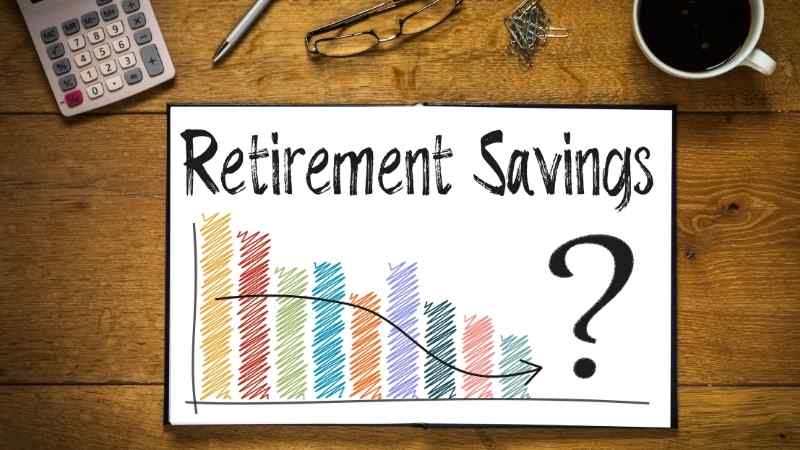Long-Term Impact of CARES Act Loans & Distributions on Retirement
The Coronavirus Aid, Relief and Economic Security (CARES) Act allowed plan sponsors to relax loan and distribution rules in 2020, giving participants greater access to funds during the pandemic. These provisions were implemented to provide relief as many employees do not have adequate short-term savings. Employee Benefit Research Institute (EBRI) has found that only one in five families has at least three months of liquid savings. Layoffs, furloughs, and other circumstances caused by the pandemic have left many workers struggling financially, so naturally, many looked to their retirement accounts for relief. While this access has been a useful tool for many financially strained Americans, such loans and withdrawals could inflict long-term damage on their progress toward a successful retirement.
Employers have an important role to play in helping to ensure that the flexibility offered by the CARES Act is used to alleviate workers’ short-term financial strains while minimizing the impact on their overall retirement strategy. Employers can do their part by carefully communicating how these withdrawals affect the amount that will be available to use in retirement and providing resources to assist in developing strategies to recuperate those funds.
CARES Act Allows for Loans and Coronavirus-Related Distributions
Under the CARES Act, plan sponsors had the option to allow participants to take advantage of increased loans with delayed repayments or coronavirus-related distributions (CRDs) without an early withdrawal penalty. Participants are allowed – but not required – to pay back the distributions within three years. During 2020, employers determined whether they would allow those provisions to be adopted within their plans and if so, the amounts in which employees could take.
Research from the Plan Sponsor Council of America (PSCA) found in the 4th quarter of 2020, 54% of plan sponsors adopted the provision to allow CRDs while 31% permitted an increase to the plan loan limit. When offered both the option of loans and CRDs under the CARES provisions, 54% of participants selected a CRD which would not require repayment.
According to Vanguard, as of the end of 2020, only 5.7% of the participants offered the option to withdraw assets initiated a CRD. While the percentage of participants who selected this option is relatively low and is less than initially projected, the average distribution represented 55% of the participant’s total balance with one in four distributions accounting for nearly 100% of their account balance. These participants may now face hardship in beginning their retirement savings accounts back at square one.
Communicate Long-Term Impact in Real Terms
Plan sponsors who did adopt these provisions should help participants understand that loans and distributions from defined contribution plans can negatively affect retirement savings and help them build a strategy around getting back to where they were. Participants have a lot on their minds today; in addition to navigating the pandemic and work and childcare routines, many are also wrestling with financial issues like healthcare bills or mortgage payments. Providing educational resources can help show participants how they can rebuild savings and get back on track for retirement – including tangible examples of repayment schedules.
The Employee Benefit Research Institute (EBRI) created projections to show the impact of taking CRDs on employees’ retirement balances for various age groups. These projections assume that employees take the full $100,000 distribution (or their full vested amount if it is less than $100,000). The projections show how much an employee’s retirement account balance at age 65 is projected to decrease as a multiple of the employee’s projected annual compensation at age 65.
In one scenario projected by the EBRI, employees take the full CRD and pay it back over three years. EBRI found that doing so caused account balances upon reaching age 65 to decrease a median of 2.3 percent across all age groups. But the negative impact was more than twice as significant (5.8 percent) for employees who took the distribution between the ages 60 and 64.
In another scenario, employees take the full CRD but do not pay it back. EBRI found that doing so caused account balances upon reaching age 65 to decrease a median of 20 percent for all age groups. But the negative impact was a staggering 45 percent for employees between the ages of 60 and 64.
Help Participants See the Impact
Based on the PSCA research, as of November 2020, only 38% of organizations had communicated the impact of these loans and distributions to plan participants. Plan sponsors can help their employees by providing straightforward information about how accessing the funds now can affect their financial futures. This information should include reminding participants that the repayment of these CRDs within the three-year time period will allow participants to avoid paying income taxes on the related distributions.
Although participants may not have the resources to currently increase their deferral rate to help make up the funds distributed as the pandemic is ongoing, plan sponsors should continue to encourage those who took CRDs to set a plan to increase their contributions in the future. Once financially stable, these participants can benefit from putting a plan in action to increase their contributions to make up for the funds and related investment earnings lost during this time period.

